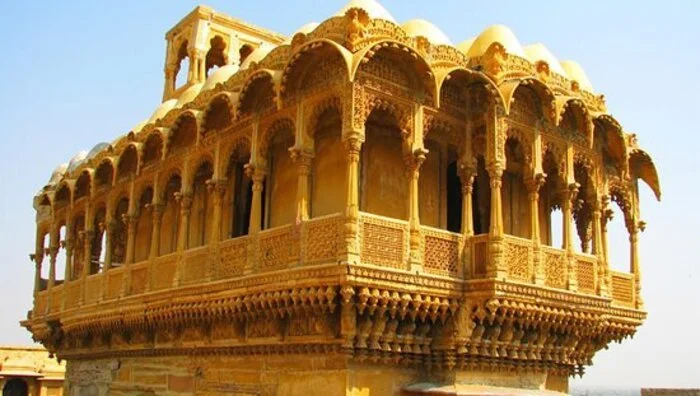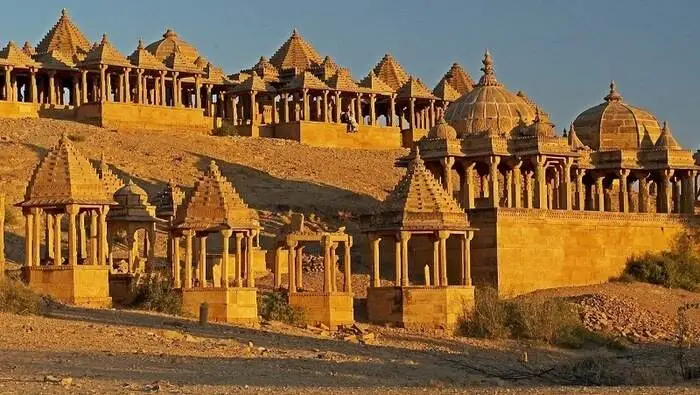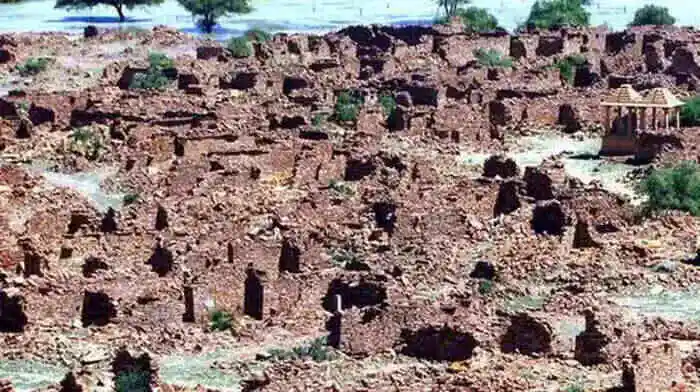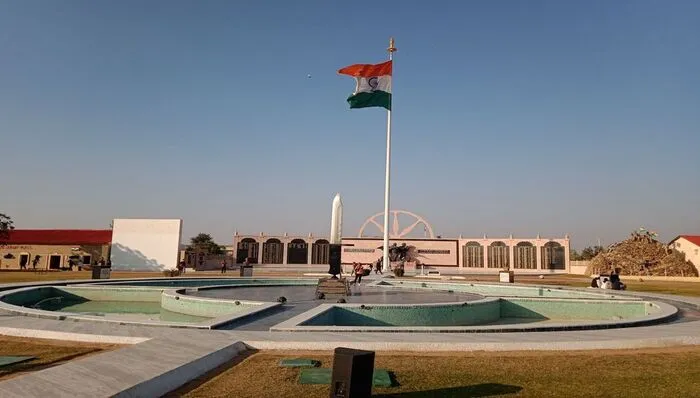Welcome to the enchanting city of Jaisalmer, where amidst the golden sands and regal architecture, stands the majestic Salam Singh ki Haveli. This exquisite haveli, with its intricate carvings and historical significance, is a treasure trove of artistic grace and cultural heritage. In this blog post, we invite you to embark on a virtual journey and explore the charm, grandeur, and fascinating history of Salam Singh ki Haveli.
1. A Glorious Heritage:
Salam Singh ki Haveli, also known as Jahaz Mahal, is named after the Prime Minister of Jaisalmer, Salam Singh. Constructed in the late 19th century, the haveli showcases the grandeur and elegance of the bygone era, depicting the prosperity of the prime minister’s family.
2. Unique Architecture:
The haveli’s architecture is a delightful blend of Rajput and Islamic styles. Its distinctive design resembles a ship sailing through the desert, earning it the moniker “Jahaz Mahal.” The intricate stone carvings and ornate balconies add to its allure, making it a sight to behold.
3. The Legend of Salam Singh:
Legend has it that Salam Singh was a ruthless and powerful prime minister. It is said that he had commissioned the construction of an additional story atop the haveli to make it taller than the neighboring royal palace. As a result, he faced the wrath of the Maharaja and the top floor was later demolished.
4. Architectural Marvels:
As you wander through the haveli’s courtyards and passageways, you’ll be captivated by the stunning frescoes and intricately carved walls. Each nook and corner unveils a new architectural marvel that reflects the artistic brilliance of the craftsmen of that era.
5. Cultural Legacy:
Salam Singh ki Haveli stands as a testament to the cultural legacy of Jaisalmer. The haveli’s architecture, decor, and historical significance offer insights into the lifestyle and artistic tastes of the affluent merchants and nobility of the time.
6. A Photographer’s Delight:
For photography enthusiasts, Salam Singh ki Haveli offers endless opportunities to capture the elegance and grandeur of Rajasthan’s architectural heritage. The play of light on the sandstone walls and the intricate carvings create picture-perfect frames that resonate with the essence of Jaisalmer.
7. Preserving the Past:
As a protected monument, Salam Singh ki Haveli is part of India’s efforts to preserve its architectural heritage. Visiting the haveli not only provides a glimpse into the past but also supports the conservation of these historical treasures.
8. Responsible Tourism:
As you explore the magnificence of Salam Singh ki Haveli, it is essential to practice responsible tourism. Respecting the heritage and rules of the monument ensures a meaningful and respectful experience for all visitors.
Salam Singh ki Haveli is more than just an architectural wonder; it is a living piece of history that transports visitors to an era of elegance and grandeur. Its intricate carvings, unique design, and fascinating legends make it an enchanting destination that captures the hearts of all who visit. So, when you find yourself yearning for a journey into the opulent past and a glimpse into the architectural treasures of Jaisalmer, let Salam Singh ki Haveli be your gateway to a world of artistic grace and historical legacy, and allow yourself to be captivated by the charm and beauty of this timeless masterpiece in the heart of the Golden City.






